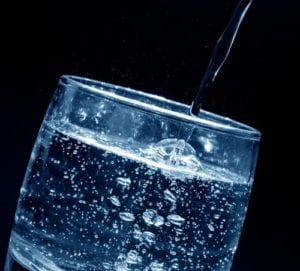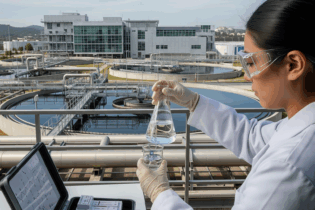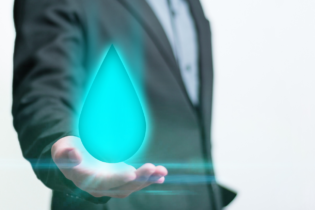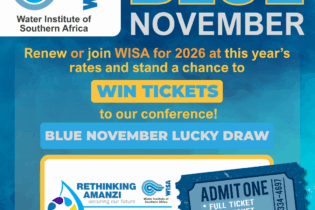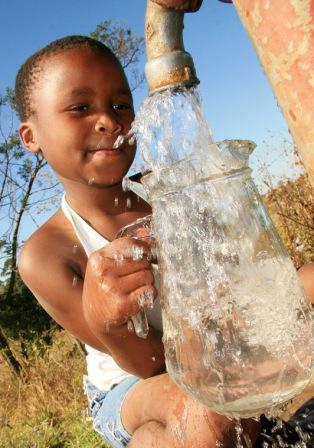 By Charlotte Metcalf
By Charlotte Metcalf
Early in September, Minister Des van Rooyen of the Inter-Ministerial Committee Task Team on Drought held a media briefing to provide an update on drought conditions across the country and the interventions that Government has embarked upon.
During the briefing, Minister van Rooyen confirmed what those of us in the water business already know; that the country is experiencing drought in its four forms – meteorological, hydrological, socio-economic and agricultural, that the South African Weather Service (SAWS) has noted the drought as one of the worst on record, that dam levels are at their lowest levels in years, and that SAWS cannot guarantee there will be sufficient rain in the country’s spring and summer rainfall zones to replenish these.
He said that, from a water supply perspective, water security must therefore be viewed and assessed in relation to the users that are served by the large regional water supply schemes comprising the major dams and large bulk infrastructure networks.
This is because (a) these systems have a higher assurance of supply due to multi-year water storage and lower risk of water variability due to a larger spatial footprint and inter-basin water transfers, and (b) the bulk of the economic nodes and national growth points are served by such schemes, totalling 238 schemes nationally.
He added that the majority of these systems are currently in a positive water balance with the national average dam storage measured at 53% of full supply capacity, which is in stark contrast with the 72% storage at the same time, last year.
This decline has necessitated the imposition of water restrictions in a number of provinces and most recently, Gauteng.
In addition, water conservation and demand measures are being intensified with 16 000 water restrictors installed in a number of areas in eThekwini, Ugu, Zululand and uMzinyathi districts. The ‘Drop a Block’ water saving device was also introduced across the country with nearly 103 000 installed in the Northern Cape alone.
Furthermore, the Department of Water & Sanitation is also increasing the water mix, for example, to utilise groundwater utilisation and more than 7 487 boreholes are now operational across the country.
Bottlers in the US face conflict
At this stage of the drought, South Africa’s water bottlers have been spared the scrutiny and anger has been directed at bottlers in the United States of America, where numerous states are experiencing severe drought.
Not a day goes by that Google Alert doesn’t highlight one or more calls for the production of bottled water to be halted or banned, despite the fact that the same Google Alert email references numerous instances where bottled water is the only option.
This is the case for homeless people facing heatstroke, for schools where there are high levels of lead in the piped water supply, for hospitals and homes where the water source has been comprised due to pollution or toxic algae, and so on.
Nor do the people calling for the industry to be dramatically curtailed realise that there are far larger users, including the beer and ‘soda’ manufacturers as well as general industry, which should also be called to account for their water footprints.
Will public opinion matter if SA drought continues?
It is highly likely that – if the drought continues in southern Africa – public opinion will turn against bottled water. Seeing as the South African National Bottled Water Association (SANBWA) represents about 80% of the water bottled in South Africa, it is therefore important for the SANBWA and its members to be public and vocal when it comes to source sustainability and security.
Legislation on bottled water
In the first instance, our country’s legislation pertaining to bottled water is among the best in the world, and the Department of Health, which drew up this legislation in consultation with the SANBWA and in line with global trends and best practice, is vigilant when it comes to enforcing it.
Secondly, SANBWA’s own Bottled Water Standard reflects the current best practices for bottling water of all types in South Africa. It was always intended to be a pragmatic and useful document, and comparable to the main food and beverage standards in major markets around the world.
Indeed, it has been benchmarked favourably against the Global Food Safety Initiative as including all the relevant control points of global standards such as BRC, IFS, ISO22000, SANS 10330, SANS 1049 and the NSF Beverage standards’.
Thirdly, the SANBWA’s environmental vision to improve members’ environmental stewardship covers four critical areas:
- Water: Ensuring effective water management from source to shelf, including requirements for source protection, efficient water usage and responsible effluent practices.
- Solid waste: Reducing, re-using, recycling all solids involved in the production and distribution of their products.
- Energy: Promoting the efficient use of energy and fuels.
- Post-distribution recycling: Supporting municipal and consumer initiatives for recycling packaging and bottles.
Fourthly, in the greater scheme of things, South Africa’s bottled water industry is an exceedingly small player compared to that of the other packaged beverages. In fact, in 2015 according to BMi Research, bottled water accounted for just 3.3% of South Africa’s total beverage market by volume.
Back in the US, the Poland Spring bottling company has significantly limited the amount of water it pumps out of one of its largest aquifers in Hollis in response to declining groundwater levels related to the most severe drought in Maine in more than a decade.
Let’s hope our drought breaks long before our industry and others have to take such drastic measures.
*
Charlotte Metcalf is the Executive Director at the South African National Bottled Water Association.


